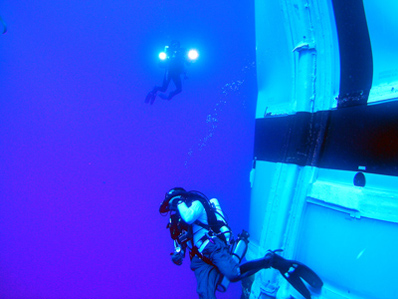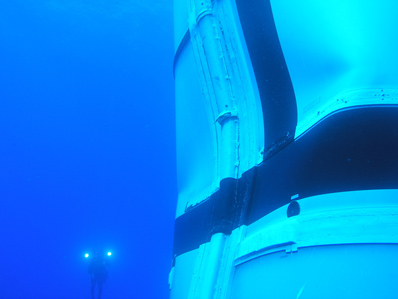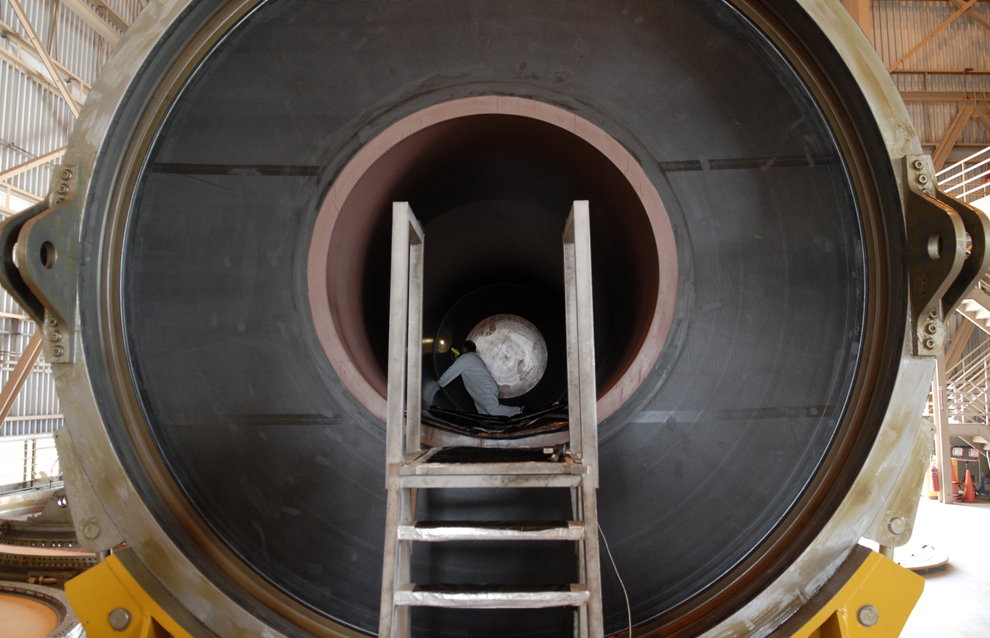see still below....
So, amid all the rah-rah on TV news about how well the Ares I-X launch went.....
Thought this was very odd during the launch. If successful is discovering problems then I guess this launch was, but this one's a biggie. It it takes even more hardware to get this thing flying right what does that do to the already big problem of Orion's mass? It's heavy, much heavier than Dragon, and so heavy that Ares I (real) could barely get it to LEO as things are now.
On the other hand it may well be moot: rumors are that Ares I will be canceled within a few weeks due to info in the Augustine Commission report. One problem after another and after multi-billions spent all NASA could muster is launching a 1:1 model of Ares I with virtually none of the systems to be used on the real rocket...not even the first stage engine. This while SpaceX is launching a fully configured Falcon 9 and a Dragon spacecraft around the first of the year. A real Ares I would not fly until 2013 at the earliest.
Funny thing: NASA and SpaceX started about the same time and SpaceX spent a tiny fraction of the $$.
Huntsville Times....
"One area of concern comes from the separation of the first-stage solid rocket booster and the upper stage mockup, Davis said. "We are looking into that. It appeared the upper stage could have come back and made contact with the first-stage booster," he said. "That's what testing a design is all about, though. We've had some concerns, and now we've got hard information coming back so we can improve on Ares."
Keith's note: In this NASA CGI videoof a computer simulation of the Ares 1-X, the first stage is shown slowly tumbling at staging and the second stage is shown flying on straight after staging only to start tumbling later. But the actual flight shows the first stage in steady flight and the second stage flying almost backward.
>
Hmm, had there been a crew in a real capsule on a real second stage this might have been a slight problem. Yes, there was no second stage motor. But what if there was a real motor and it failed to start? One would think, at a minimum, that you'd like to have a design that defaults to a safe stage separation regardless of whether second stage ignition occurs such that a crew abort could be initiated. Its these high altitude abort scenarios that NASA managers often wave around to disqualify EELVs for use with human crews.
>
Hmm, had there been a crew in a real capsule on a real second stage this might have been a slight problem. Yes, there was no second stage motor. But what if there was a real motor and it failed to start? One would think, at a minimum, that you'd like to have a design that defaults to a safe stage separation regardless of whether second stage ignition occurs such that a crew abort could be initiated. Its these high altitude abort scenarios that NASA managers often wave around to disqualify EELVs for use with human crews.








 Fractal Design Arc Mini R2, 3800X, Asus B450M-PRO mATX, 2x8GB B-die@3800C16, AMD Vega64, Seasonic 850W Gold, Black Ice Nemesis/Laing DDC/EKWB 240 Loop (VRM>CPU>GPU), Noctua Fans.
Fractal Design Arc Mini R2, 3800X, Asus B450M-PRO mATX, 2x8GB B-die@3800C16, AMD Vega64, Seasonic 850W Gold, Black Ice Nemesis/Laing DDC/EKWB 240 Loop (VRM>CPU>GPU), Noctua Fans.

Comment